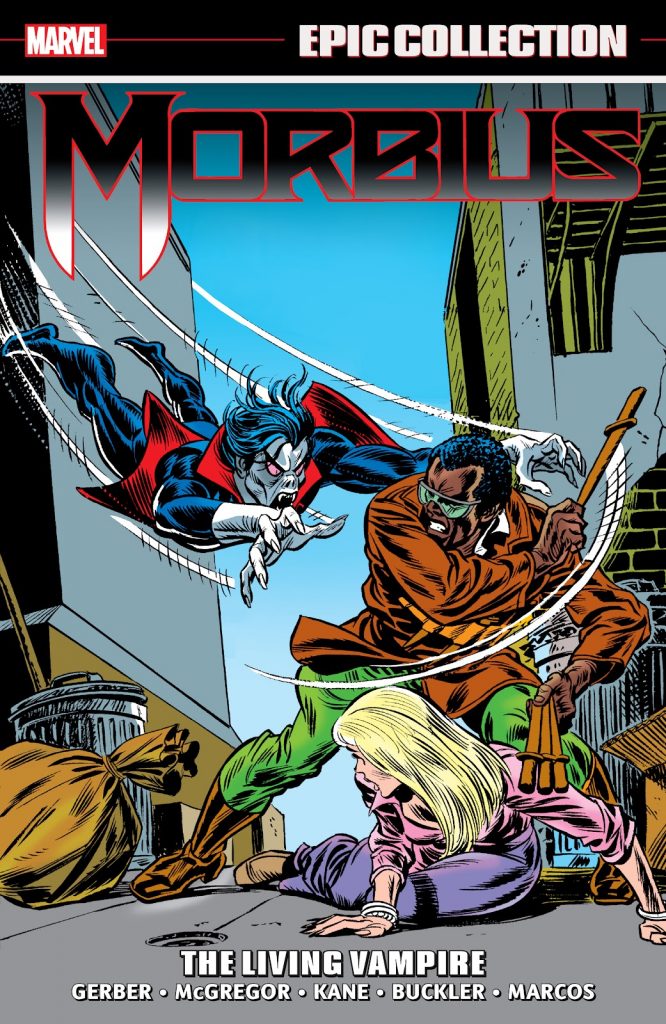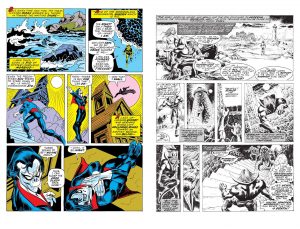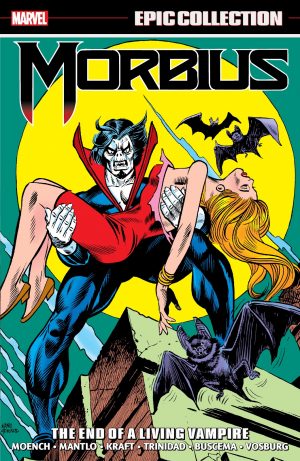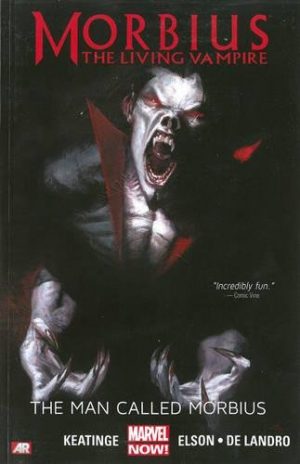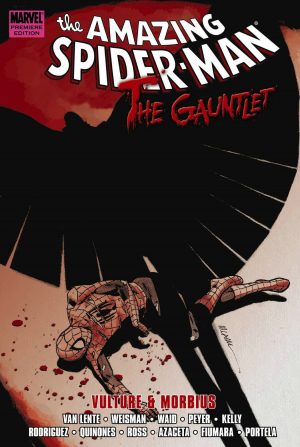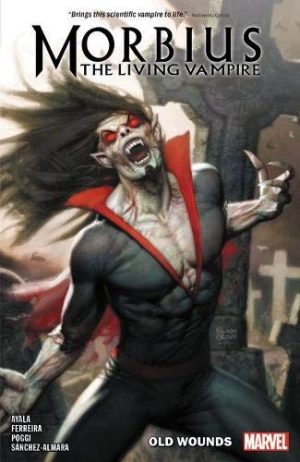Review by Frank Plowright
Morbius the Living Vampire is a character with potential that’s only rarely been achieved. His beginning as created by Roy Thomas is that of scientist Michael Morbius generating his own tragic condition when attempting to cure a rare blood disorder. It happened during a story not among Spider-Man’s finest moments when he grew four extra arms, although Gil Kane art (sample left) reduces the silliness slightly. This was in 1971, and this collection trawls through the remainder of Morbius’ 1970s appearances, revealing the origin to be far from the worst outing.
Given his condition Morbius can’t be expected to present as a cheery chappy, but the way he’s written at first is a cycle of vicious need followed by bitter remorse at his lust for human blood to stay alive. Collecting so many appearances highlights the repetition. Despite that, potential trumped execution and by 1974 Morbius was headlining two distinct titles. His colour appearances, limited by the comics code, start well enough with art by Paul Gulacy, Kane and P. Craig Russell, while Steve Gerber drops Morbius in the middle of a supernatural war. It becomes a genre-hopping muddle, but has ideas beyond the obvious that Gerber’s successor Doug Moench lacks.
On the concurrent black and white stories Don McGregor has greater creative freedom to include a more dissolute environment, and introduce more convincing gothic horror. Rich Buckler puts greater effort into his art than in the colour version, supplying design-led layouts, and Tom Sutton only draws two stories, but his decaying Morbius is memorable. McGregor’s plots are this collection’s highlight, forcing Morbius into a heroic role, never predictable, offering clever surprises, and characterised by a sense of narrative experimentation. However, part of that is his unconventional second person narrative voice, which quickly wears thin, and the stories are extensively over-written, so the best of the collection status is only by default in comparison with the surrounding mediocrity.
With Kane, Sutton, Gulacy and then Frank Robbins, artistically Morbius is rendered by a fair number of arch-stylists, some more successful than others. Gulacy is very influenced by Jim Steranko, but hasn’t mastered anatomy, Kane blows hot and cold, and Robbins still won’t be to all tastes. His method is a form of cinematic movement as if each panel is a quickly snapped, distorted action photograph. He’s influenced by the classic newspaper strip cartoonists of the 1940s, a style not entirely suited to horror, and he has trouble keeping a little girl looking her age.
By the end of this collection, a very ordinary face-off against Werewolf By Night, the Morbius continuity has reached mid-1975, and remains stuck in too many shoddy stories. McGregor and Gerber provide the written highlights, but inconsistency plagues both, so perhaps better awaits in The End of a Living Vampire. Alternatively, the collections are combined in oversized hardcover as Morbius the Living Vampire Omnibus.
If you don’t want the full horror, so to speak, Preludes and Nightmares presents the origin story and a couple more drawn by Kane combined with the later outing The Man Called Morbius.
